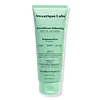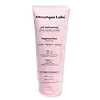What's inside
What's inside
 Key Ingredients
Key Ingredients

No key ingredients
 Benefits
Benefits

 Concerns
Concerns

No concerns
 Ingredients Side-by-side
Ingredients Side-by-side

Water
Skin ConditioningCocamidopropyl Hydroxysultaine
CleansingDisodium Cocoyl Glutamate
CleansingSodium Cocoyl Glutamate
CleansingBentonite
AbsorbentStearyl Alcohol
EmollientPropanediol
SolventCichorium Intybus Root Extract
MaskingCamellia Sinensis Leaf Extract
AntimicrobialCamellia Sinensis Seed Extract
HumectantAlpha-Glucan Oligosaccharide
CleansingEthylhexylglycerin
Skin ConditioningXanthan Gum
EmulsifyingCitric Acid
BufferingSodium Hydroxide
BufferingPotassium Sorbate
PreservativePhenoxyethanol
PreservativeWater, Cocamidopropyl Hydroxysultaine, Disodium Cocoyl Glutamate, Sodium Cocoyl Glutamate, Bentonite, Stearyl Alcohol, Propanediol, Cichorium Intybus Root Extract, Camellia Sinensis Leaf Extract, Camellia Sinensis Seed Extract, Alpha-Glucan Oligosaccharide, Ethylhexylglycerin, Xanthan Gum, Citric Acid, Sodium Hydroxide, Potassium Sorbate, Phenoxyethanol
Water
Skin ConditioningAloe Barbadensis Leaf Juice
Skin ConditioningSodium Cocoyl Isethionate
CleansingCocamidopropyl Hydroxysultaine
CleansingSodium Lauroamphoacetate
CleansingCaprylyl/Capryl Glucoside
CleansingGlycol Distearate
EmollientSodium Methyl Cocoyl Taurate
CleansingPropanediol
SolventButyrospermum Parkii Butter
Skin ConditioningHelianthus Annuus Seed Oil
EmollientCocos Nucifera Oil
MaskingPrunus Armeniaca Kernel Oil
MaskingSimmondsia Chinensis Seed Oil
EmollientPanthenol
Skin ConditioningBetaine
HumectantHydroxypropyl Guar Hydroxypropyltrimonium Chloride
Citric Acid
BufferingTrisodium Ethylenediamine Disuccinate
Ethylhexylglycerin
Skin ConditioningBenzoic Acid
MaskingPhenoxyethanol
PreservativeWater, Aloe Barbadensis Leaf Juice, Sodium Cocoyl Isethionate, Cocamidopropyl Hydroxysultaine, Sodium Lauroamphoacetate, Caprylyl/Capryl Glucoside, Glycol Distearate, Sodium Methyl Cocoyl Taurate, Propanediol, Butyrospermum Parkii Butter, Helianthus Annuus Seed Oil, Cocos Nucifera Oil, Prunus Armeniaca Kernel Oil, Simmondsia Chinensis Seed Oil, Panthenol, Betaine, Hydroxypropyl Guar Hydroxypropyltrimonium Chloride, Citric Acid, Trisodium Ethylenediamine Disuccinate, Ethylhexylglycerin, Benzoic Acid, Phenoxyethanol
 Reviews
Reviews

Ingredients Explained
These ingredients are found in both products.
Ingredients higher up in an ingredient list are typically present in a larger amount.
Citric Acid is an alpha hydroxy acid (AHA) naturally found in citrus fruits like oranges, lemons, and limes.
Like other AHAs, citric acid can exfoliate skin by breaking down the bonds that hold dead skin cells together. This helps reveal smoother and brighter skin underneath.
However, this exfoliating effect only happens at high concentrations (20%) which can be hard to find in cosmetic products.
Due to this, citric acid is usually included in small amounts as a pH adjuster. This helps keep products slightly more acidic and compatible with skin's natural pH.
In skincare formulas, citric acid can:
While it can provide some skin benefits, research shows lactic acid and glycolic acid are generally more effective and less irritating exfoliants.
Most citric acid used in skincare today is made by fermenting sugars (usually from molasses). This synthetic version is identical to the natural citrus form but easier to stabilize and use in formulations.
Read more about some other popular AHA's here:
Learn more about Citric AcidCocamidopropyl Hydroxysultaine is a synthetic cleansing agent, though it is derived from coconut oil.
It is used to enhance the texture of products by boosting lather and thickening the texture. As a cleanser, Cocamidopropyl Hydroxysultaine is mild.
Ethylhexylglycerin (we can't pronounce this either) is commonly used as a preservative and skin softener. It is derived from glyceryl.
You might see Ethylhexylglycerin often paired with other preservatives such as phenoxyethanol. Ethylhexylglycerin has been found to increase the effectiveness of these other preservatives.
Phenoxyethanol is a preservative that has germicide, antimicrobial, and aromatic properties. Studies show that phenoxyethanol can prevent microbial growth. By itself, it has a scent that is similar to that of a rose.
It's often used in formulations along with Caprylyl Glycol to preserve the shelf life of products.
Propanediol is an all-star ingredient. It softens, hydrates, and smooths the skin.
It’s often used to:
Propanediol is not likely to cause sensitivity and considered safe to use. It is derived from corn or petroleum with a clear color and no scent.
Learn more about PropanediolWater. It's the most common cosmetic ingredient of all. You'll usually see it at the top of ingredient lists, meaning that it makes up the largest part of the product.
So why is it so popular? Water most often acts as a solvent - this means that it helps dissolve other ingredients into the formulation.
You'll also recognize water as that liquid we all need to stay alive. If you see this, drink a glass of water. Stay hydrated!
Learn more about Water